What are 'Ghost Guns' and Why Are They So Dangerous?
| Summary |
Ghost guns have become more common in recent years due to advancements in technology, the easy availability of firearm components and kits, and gaps in existing firearms regulations.
The rise of ghost guns has ignited a significant amount of concern for various reasons. One of the main concerns is the risk of these firearms ending up in the possession of individuals who are prohibited from having them, such as convicted felons, domestic abusers, and people with severe mental illnesses. Ghost guns, which lack serial numbers and are therefore untraceable by law enforcement, present an alluring option for people looking to avoid detection.
In addition, the self-made nature of homemade firearms raises concerns regarding the efficacy of current gun control policies. Current regulations only cover the sale and transfer of fully assembled firearms, leaving a gap when it comes to the individual components or materials used to construct ghost guns. This creates opportunities for individuals who want to bypass the law.
With the limited availability of precise statistics, it is clear that ghost guns have become a growing concern for law enforcement agencies, policymakers, and the public. Efforts to address the issue of ghost guns will necessitate a synchronized approach across various levels of government, along with cooperation from stakeholders in the firearms industry, advocacy groups, and the community.
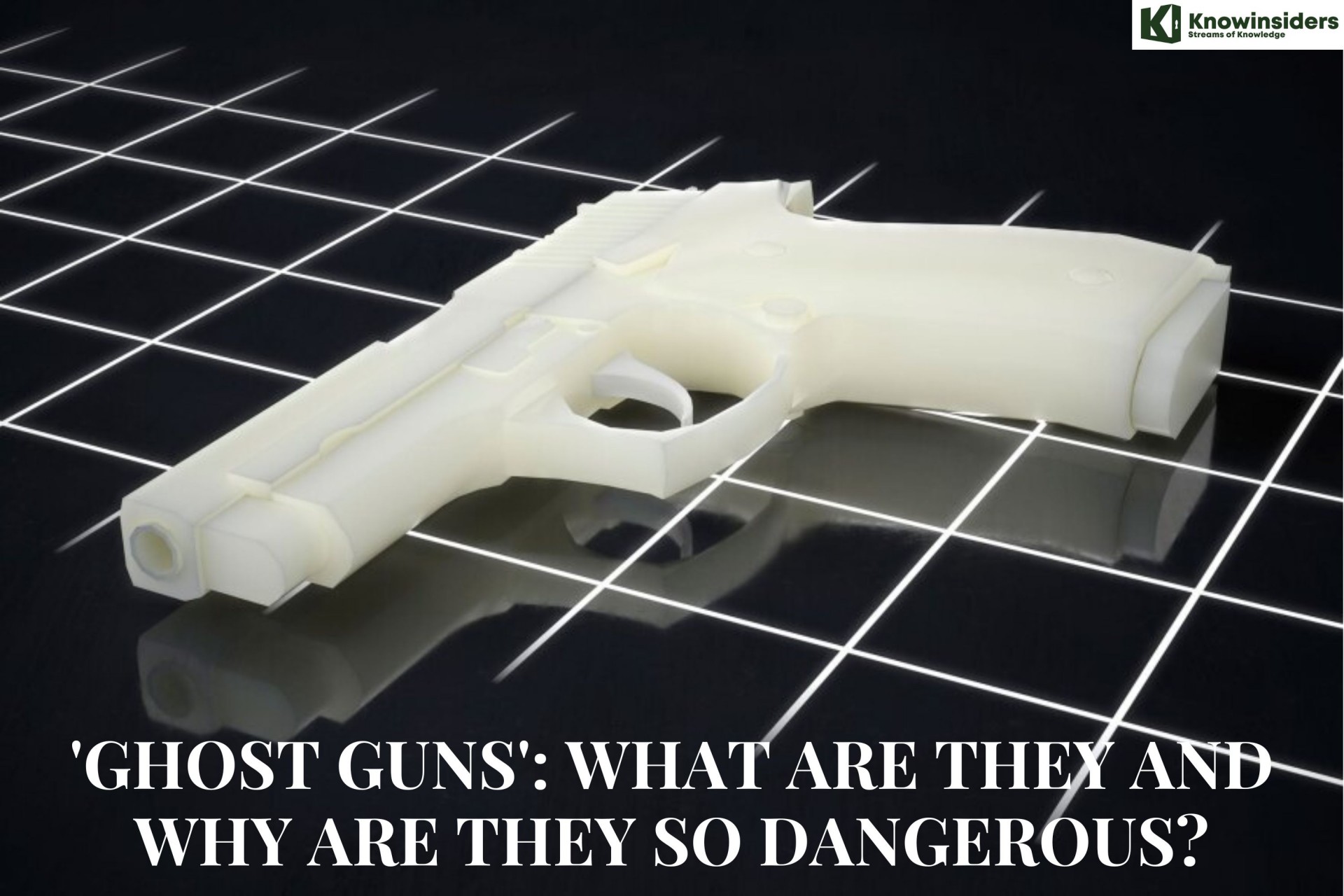 |
| 'Ghost Guns': What Are They and Why Are They So Dangerous? |
What Is a Ghost Gun?
In essence, a ghost gun is a firearm that is crafted or put together using easily accessible components, devoid of any serial numbers or distinguishing features. Firearms can be constructed from kits, 3D-printed components, or fabricated from scratch, often using easily accessible materials and tools. These weapons are untraceable due to the absence of serial numbers, which is why they are commonly referred to as "ghost" guns.
There are several factors that contribute to the widespread availability of ghost guns. With the advancements in technology, like 3D printing and CNC machining, it has become increasingly convenient for individuals to produce firearms in the comfort of their own homes, with minimal oversight. In addition, the rise of online marketplaces has made it easier to sell firearm kits and components, bypassing the need for traditional background checks and regulatory obstacles.
How Prevalent Are Ghost Guns Now?
Law enforcement agencies across the United States have noticed a significant increase in the confiscation of homemade firearms in recent years. These seizures involve homemade firearms that have been recovered during criminal investigations, along with the components and materials used to manufacture untraceable firearms. The rising number of these seizures indicates a concerning rise in the presence of untraceable firearms in communities across the country.
Media outlets have extensively reported on various incidents related to ghost guns, such as shootings, arrests, and legislative initiatives aimed at regulating their production and distribution. These reports emphasize the significance of ghost guns on public safety and the difficulties law enforcement agencies encounter in tackling this issue. The media coverage has helped to increase awareness of the issue among the general public and policymakers.
There is a wide availability of ghost gun kits, components, and instructions for purchase on various online platforms, forums, and social media. These platforms offer individuals convenient access to the materials and information necessary for creating ghost guns, often bypassing background checks or age verification. With the rise of online sales, the availability and prevalence of ghost guns have surged.
Lawmakers at the federal, state, and local levels have proposed different measures to regulate the production, sale, and possession of ghost guns in response to concerns about their increasing prevalence. These proposals involve the expansion of background check requirements to encompass firearm components, the regulation of the sale of unfinished frames and receivers, and the implementation of restrictions on 3D-printed gun files. The increased legislative focus on ghost guns highlights their rising presence and the necessity for policy interventions to tackle the matter.
Why Are Ghost Guns Dangerous?
Lack of Regulation
Typically, ghost guns lack serial numbers and the usual identifying markings found on commercially manufactured firearms. It can be quite difficult, or even nearly impossible, for law enforcement agencies to track them down in the event of a crime. Without proper serial numbers, untraceable firearms can be readily purchased, sold, or transferred without the need for background checks or documentation. This creates opportunities for individuals who are not allowed to have firearms to acquire them.
Accessibility
The components and materials needed to make ghost guns are often readily available and can be purchased online or through other channels with minimal oversight. This accessibility makes it easier for individuals, including those with malicious intent, to obtain and assemble firearms without detection. As a result, ghost guns may contribute to the proliferation of firearms in communities where they would otherwise be restricted or unavailable.
Risk of Diversion
Ghost guns have a higher likelihood of being diverted into the illegal market because of their limited regulation and traceability. Once in circulation, these unregistered firearms can be challenging to trace and retrieve, making them highly sought-after by criminal organizations and other illicit actors. Without serial numbers, it becomes simpler for people to modify or eliminate identifying markings, which adds another layer of complexity to the task of tracing their origins.
Potential for Criminal Use
Ghost guns can be used for a variety of criminal activities, including violent crimes, armed robberies, and acts of terrorism. Their untraceable nature makes them appealing to individuals seeking to evade law enforcement detection or prosecution. Ghost guns have been linked to numerous incidents of gun violence and have been recovered at crime scenes across the United States.
Safety Concerns
Homemade firearms, including ghost guns, may lack the quality control and testing procedures employed by licensed manufacturers to ensure their safety and reliability. As a result, there is an increased risk of mechanical failures, malfunctions, and accidental discharges with ghost guns. This poses a danger not only to the individuals using these firearms but also to bystanders and the broader community.
Read More: How Many Guns Do Americans Own?
How are Ghost Guns Made?
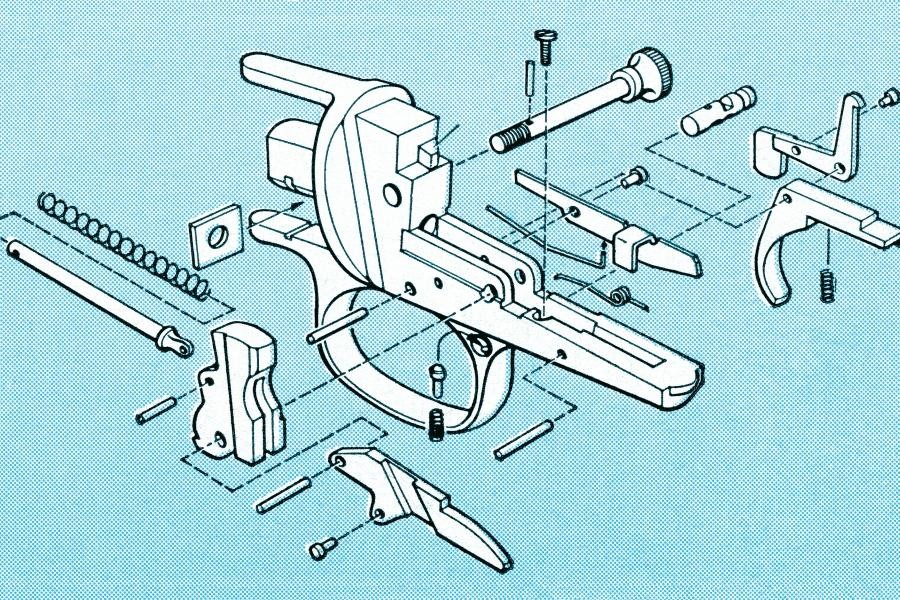 |
| How are Ghost Guns Made? |
Ghost guns are typically made through a process of assembling or fabricating firearm components using readily available materials and tools. The specific method of making a ghost gun can vary depending on factors such as the type of firearm being constructed, the skill level of the individual, and the resources at their disposal. However, there are several common methods and techniques used to make ghost guns:
Kit Assembly
Making a ghost gun can be done by purchasing a firearm kit that usually comes with all the components needed to assemble a complete firearm. These kits typically include unfinished frames or receivers, which are the parts of a firearm that are subject to legal regulations, as well as other components like barrels, slides, and springs. Assembly of the kit usually requires common hand tools and follows the instructions provided by the kit manufacturer.
3D Printing
With the advent of 3D printing technology, it has become possible to manufacture firearm components using specialized printers and printable materials, such as plastic or metal filament. Individuals can download digital blueprints or CAD files for firearm parts from the internet and use them to create physical components layer by layer. While 3D printing offers flexibility and customization options, it may require a higher level of technical expertise and access to specialized equipment.
CNC Machining
Computer Numerical Control (CNC) machining involves using computer-controlled machines to precisely cut and shape metal or other materials into firearm components. DIY enthusiasts can use CNC mills or routers to fabricate parts from raw materials such as aluminum billets or polymer blocks. CNC machining allows for high levels of precision and repeatability but may require more advanced skills and equipment compared to other methods.
Hand Fabrication
In some cases, individuals may choose to fabricate firearm components by hand using manual tools and techniques. This could involve tasks such as drilling, cutting, and shaping metal or polymer materials to create functional parts like frames, receivers, and barrels. Hand fabrication requires patience, attention to detail, and a good understanding of firearm design principles.
Hybrid Approaches
Builders often utilize various techniques to create ghost guns, including the use of 3D-printed components alongside readily available parts or modifying existing firearms to eliminate serial numbers and other identifying marks. Hybrid approaches offer a wide range of possibilities and room for innovation in the manufacturing process, although they can also bring about some compatibility and reliability issues.
How to Spot Ghost Guns?
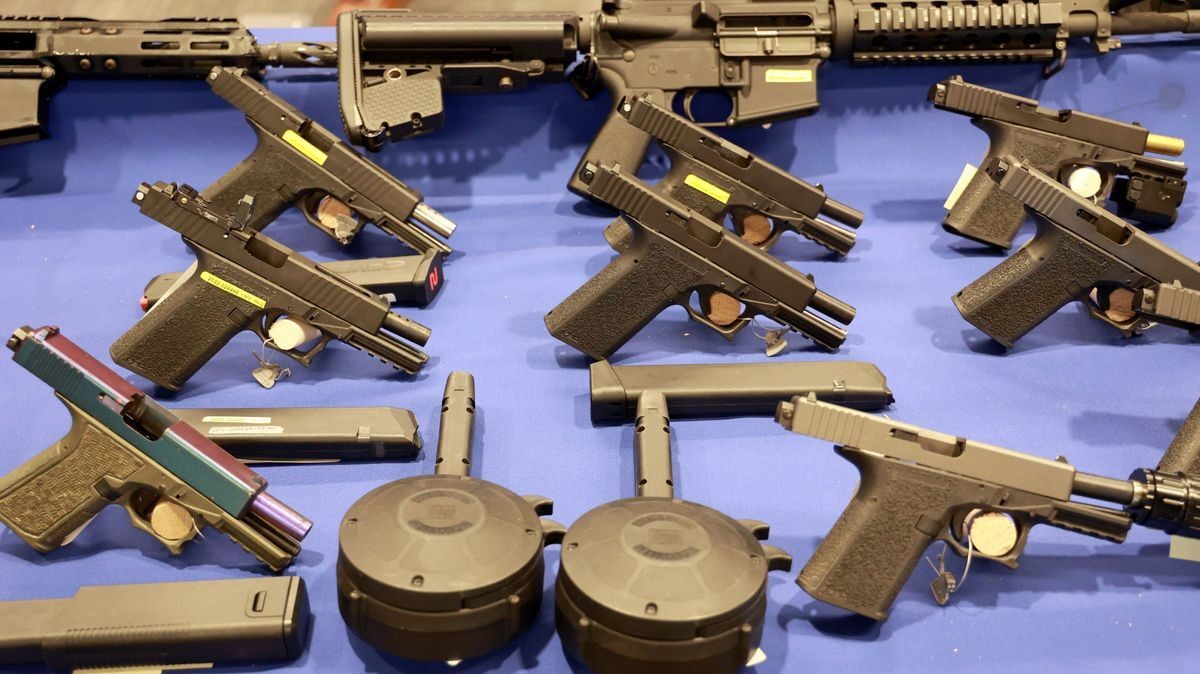 |
| How to Spot Ghost Guns? |
Missing Serial Numbers
One of the most telltale signs of a ghost gun is the absence of a serial number or other identifying markings on the firearm. Legally manufactured firearms are required to have serial numbers engraved or stamped on them by licensed manufacturers. The lack of serial numbers on a firearm may indicate that it is homemade or assembled from unserialized components.
Unfinished Appearance
Ghost guns may have an unfinished or DIY appearance compared to commercially manufactured firearms. This could include rough edges, uneven surfaces, or visible tool marks on the firearm's components. Homemade firearms may also exhibit signs of hand fabrication, such as irregularities in the machining or assembly process.
Non-Standard Parts or Modifications
Ghost guns may incorporate non-standard parts or modifications that deviate from typical firearm designs. This could include the use of 3D-printed components, homemade barrels or receivers, or improvised features not found on commercially available firearms. Individuals should be wary of firearms that appear to have been altered or customized in unconventional ways.
DIY Characteristics
Homemade firearms may exhibit characteristics commonly associated with DIY projects, such as non-traditional materials, unconventional assembly methods, or amateurish craftsmanship. These firearms may be assembled using readily available tools and materials, including household items or repurposed machinery. Individuals should be cautious when encountering firearms that show signs of being homemade or handcrafted.
Lack of Branding or Manufacturer Information
Ghost guns usually do not have any branding or manufacturer information that you would find on firearms produced by companies. Firearms that are produced in accordance with the law usually display the manufacturer's name, logo, or other distinctive markings, as well as model numbers, caliber designations, and other pertinent details. The lack of these markings could suggest that a firearm is untraceable.
Suspicious Circumstances
Finally, understanding the circumstances surrounding the acquisition or possession of a firearm can offer valuable insights into its origins. People who have firearms without proper documentation, who refuse to provide information about the firearm's history, or who exhibit suspicious behavior might be involved in the production or trafficking of ghost guns. Law enforcement officers should exercise caution and adhere to proper protocols when dealing with such situations.
Which States Regulate Ghost Guns in the US?
As of the last update in 2024, several states have enacted laws regulating ghost guns or have proposed legislation to address the issue.
These regulations typically focus on aspects such as serialization, background checks, and sales restrictions for homemade firearms. Here are some examples of states that have taken action to regulate ghost guns:
California: California has enacted laws requiring the serialization of homemade firearms, prohibiting the possession of firearms without serial numbers, and regulating the sale of unfinished frames and receivers.
Colorado: Colorado controls the sale of ghost gun parts, prohibiting their sale without a background check and a serial number.
Connecticut: Connecticut has enacted laws requiring the serialization of homemade firearms and prohibiting the sale and possession of firearms without serial numbers.
Delaware: There should be background checks and serial numbers for component parts, no undetectable plastic guns, no guns made using 3D printing, and no instructions for 3D printing distributed.
Hawaii: There should be no 3D printing of firearms, background checks and serial numbers for all component parts, and reporting of any ghost guns to authorities.
Illinois: Illinois controls ghost gun parts, making sure they can't be sold without a background check and a serial number. For every firearm and component part, there are background checks and serial numbers.
New York: New York has implemented regulations requiring the serialization of homemade firearms and imposing restrictions on the sale and possession of ghost guns.
New Jersey: New Jersey has passed laws requiring the serialization of homemade firearms, regulating the sale of ghost gun parts, and imposing penalties for possessing ghost guns without serial numbers.
Nevada: NEVADA regulates ghost gun parts to prevent sales without a background check and serial numbers.
Maryland: Maryland has introduced bills to regulate ghost guns, including requiring background checks for homemade firearms and imposing penalties for possessing ghost guns without serial numbers.
Oregon: Prohibits undetectable firearms, including 3D printed guns; requires all firearms, frames, and receivers to be serialized.
Rhode Island: Ghost gun parts are regulated in Rhode Island, where it is illegal to sell them without a background check and serial number.
Washington: Washington has proposed legislation to regulate ghost guns, including requiring background checks for homemade firearms and prohibiting the possession of ghost guns by prohibited persons.
Final Thoughts
As the discussion surrounding ghost guns unfolds, it becomes evident that this phenomenon poses intricate challenges that do not have simple solutions. Expertise in firearms will be crucial in finding a balanced approach that addresses the issue of gun violence while upholding individual rights and liberties.
It is essential for stakeholders from various sectors to come together and engage in thoughtful consideration and collaboration. By fully addressing the ghost gun issue, we can effectively tackle the root causes and minimize the potential harm it may cause.
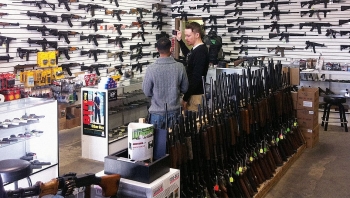 How to Buy A Gun in the US with 2 Steps in 15 Minutes How to Buy A Gun in the US with 2 Steps in 15 Minutes You'll find that Americans are always very courteous and will use expressions like "sorry" and "thank you." This is due to the fact that they ... |
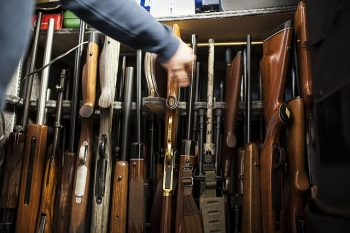 Amazing Facts About Guns in the US: Ownership, Sales and Tax Amazing Facts About Guns in the US: Ownership, Sales and Tax Explore fascinating statistics regarding firearms in the United States, including information on gun ownership, sales, taxation, criminal activity, and fatalities. |
 Top 10 Best-Selling Gun Brands in the US - 2024 Report Top 10 Best-Selling Gun Brands in the US - 2024 Report Several American firearm brands have led innovation and craftsmanship in the ever-changing industry. Today, we examine the top 12 gun brands that dominate the market ... |


























